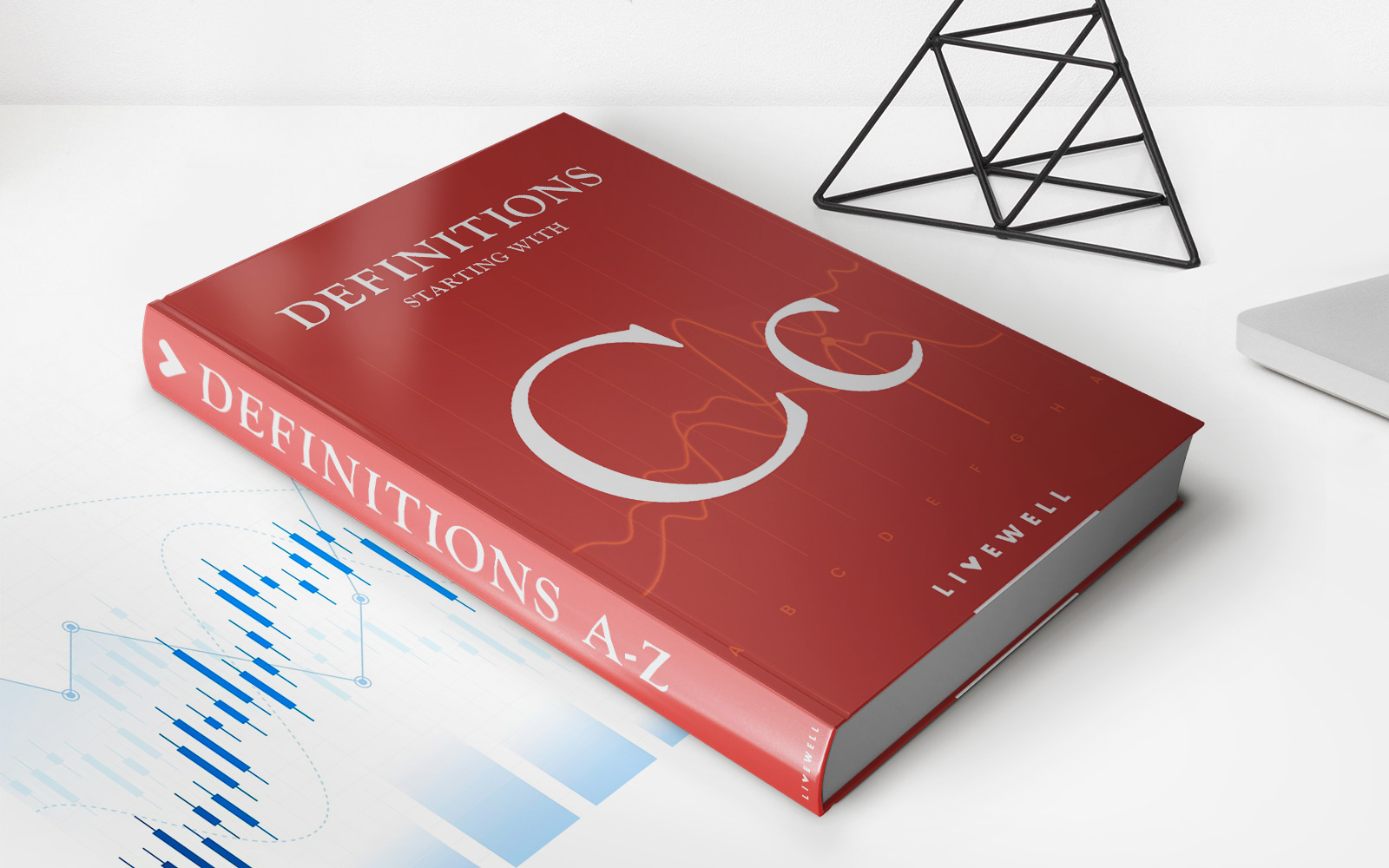Home>Finance>How Much Insurance Can You Get For 9.95 A Month


Finance
How Much Insurance Can You Get For 9.95 A Month
Published: November 13, 2023
Find out how much insurance coverage you can get for just $9.95 per month. Take control of your finances and protect your future with affordable insurance options.
(Many of the links in this article redirect to a specific reviewed product. Your purchase of these products through affiliate links helps to generate commission for LiveWell, at no extra cost. Learn more)
Table of Contents
Introduction
Insurance is an essential financial tool that provides protection and peace of mind for individuals and their families. Whether it’s health insurance, life insurance, or auto insurance, having the right coverage ensures that you and your loved ones are financially protected in the face of unexpected events.
When it comes to insurance, one question that often arises is, “How much coverage can I get for a specific monthly premium?” Many individuals are particularly interested in finding out how much insurance they can get for $9.95 a month – a budget-friendly amount for many people.
In this article, we will explore the factors that affect insurance coverage, the various types of insurance policies available, and how you can calculate the insurance coverage you can get for $9.95 a month. We will also provide tips on finding the right insurance provider to meet your needs.
Insurance is not something to take lightly, as it can have a significant impact on your financial well-being. So, let’s dive in and uncover how much insurance you can get for $9.95 a month.
Factors Affecting Insurance Coverage
When determining how much insurance coverage you can get for $9.95 a month, it’s important to consider several factors that influence the premium amount and the extent of coverage. These factors may vary depending on the type of insurance policy you are seeking. Here are some key factors:
- Type of Insurance: Different types of insurance policies have varying coverage limits. For example, health insurance may cover medical expenses up to a certain amount, while life insurance policies offer a death benefit that can range from a few thousand dollars to millions of dollars. The specific type of insurance you choose will play a significant role in determining the coverage you can obtain.
- Age and Health: Your age and overall health will impact the cost of insurance and the amount of coverage available. Insurance providers assess the level of risk associated with insuring an individual based on factors such as age, pre-existing medical conditions, and lifestyle habits. Younger and healthier individuals typically receive more favorable rates and might be eligible for higher coverage amounts.
- Lifestyle and Habits: Certain lifestyle choices and habits can influence the premium amount and coverage options. For example, smokers might have higher life insurance premiums compared to non-smokers due to the increased health risks associated with smoking. Similarly, individuals engaged in high-risk activities, such as extreme sports or occupations that involve hazardous conditions, might have limited coverage options or higher premiums.
- Location: Your geographical location can affect insurance coverage and premiums. For example, if you live in an area prone to natural disasters or high crime rates, your home insurance premium might be higher, or certain coverage options might not be available.
- Deductibles and Coverage Limits: The deductible is the amount you pay out of pocket before the insurance coverage kicks in. Lower deductibles generally result in higher premiums. Similarly, coverage limits determine the maximum amount the insurance provider will pay out for a claim. Higher coverage limits often come with higher premiums.
It’s essential to consider these factors when assessing the coverage you can obtain for $9.95 a month. However, keep in mind that the specific insurance policies and providers you consider may have additional factors that impact coverage. It’s best to consult with insurance professionals or utilize online tools to get accurate estimates based on your unique circumstances.
Types of Insurance Policies Available
Insurance coverage comes in a variety of forms, each designed to protect against different risks and provide financial security in specific areas of life. Here are some common types of insurance policies available:
- Health Insurance: Health insurance covers medical expenses, including doctor visits, hospital stays, medications, and surgical procedures. It helps mitigate the high costs of healthcare and ensures that you receive the necessary medical treatment without bearing the full financial burden.
- Life Insurance: Life insurance provides a death benefit to designated beneficiaries in the event of the insured person’s death. It serves as a financial safety net for surviving family members, covering funeral expenses, mortgages, outstanding debts, and providing income replacement. There are various types of life insurance, including term life insurance, whole life insurance, and universal life insurance.
- Auto Insurance: Auto insurance protects against financial loss in the event of a car accident, theft, or damage to your vehicle. It typically includes liability coverage, which covers damages and injuries caused to others, as well as collision and comprehensive coverage for repairs or replacements to your vehicle.
- Homeowners/Renters Insurance: Homeowners insurance provides coverage for your home’s structure, personal belongings, and liability in case of accidents on your property. Renters insurance offers similar coverage but is tailored for individuals who rent their living space instead of owning it.
- Disability Insurance: Disability insurance provides income replacement if you are unable to work due to an illness or injury. It ensures that you can still meet your financial obligations and maintain your standard of living during a period of disability.
- Liability Insurance: Liability insurance protects against legal claims and financial loss if you are found responsible for causing harm or injury to others. It covers legal fees, settlements, and judgments arising from accidents or negligence.
These are just a few examples of the insurance policies available. There are also specialized policies such as travel insurance, pet insurance, and business insurance, catering to specific needs.
When considering how much insurance coverage you can get for $9.95 a month, it’s important to understand the different types of insurance available and prioritize based on your specific needs and circumstances.
Calculating Insurance Coverage for $9.95 a Month
Now that you understand the factors that affect insurance coverage and the various types of insurance available, let’s delve into how you can calculate the insurance coverage you can get for $9.95 a month. Keep in mind that the specific calculations will depend on the type of insurance policy you are considering.
1. Research and Compare: Start by researching different insurance providers and policy options. Look for reputable companies that offer policies within your budget. Compare the coverage limits and premiums of each policy to determine which ones fit your needs and financial constraints.
2. Online Tools and Calculators: Many insurance providers offer online tools and calculators that can help you estimate the coverage you can get for a specific premium. These tools take into account factors such as age, location, health, and lifestyle to provide you with a general idea of the coverage available within your budget.
3. Talk to Insurance Professionals: If you want a more accurate estimate or have specific questions about coverage options, it’s advisable to speak with insurance professionals. They can analyze your unique circumstances and provide personalized recommendations based on your budget and coverage needs.
4. Consider Additional Factors: While calculating coverage within a specific budget, it’s important to consider any additional factors that may affect your premium. For instance, a higher deductible can lower your premium, but it also means you’ll need to pay more out of pocket before the insurance coverage kicks in.
5. Prioritize Coverage: With a limited budget of $9.95 a month, you may need to prioritize your insurance coverage. Determine which aspects of your life require the most protection and focus on obtaining coverage in those areas. For example, if you have dependents or outstanding debts, life insurance might be a priority over other types of insurance.
Keep in mind that while $9.95 a month can provide some level of insurance coverage, it may not be sufficient for comprehensive or high-value policies. It’s crucial to find a balance between your budget and the coverage you need to ensure adequate financial protection.
Always read the policy terms and conditions carefully to understand the coverage limits, exclusions, and any additional costs that may apply. This will help you make an informed decision that aligns with your needs and budget.
Finding the Right Insurance Provider
When searching for the right insurance provider to meet your needs, it’s important to consider several factors aside from just the coverage and premium amount. Here are some key considerations to help you find the right insurance provider:
- Reputation and Financial Stability: Look for insurance providers with a strong reputation and a history of financial stability. Check their ratings from independent rating agencies to ensure they have the resources to fulfill their obligations in the event of a claim.
- Coverage Options: Assess the variety of insurance policies and coverage options offered by the provider. An insurance company that offers a wide range of policies can be beneficial if you need multiple types of coverage.
- Customer Service: Pay attention to the quality of customer service provided by the insurance company. Read reviews and testimonials from existing customers to gauge their satisfaction levels. Prompt and efficient customer service is crucial when filing claims or seeking assistance.
- Claims Process: Understand the insurance provider’s claims process and the ease of filing a claim. A streamlined and transparent claims process can make a significant difference when you need to access your insurance coverage.
- Discounts and Incentives: Inquire about any discounts or incentives offered by the insurance provider. Many insurance companies offer discounts based on factors such as bundling multiple policies, maintaining a good driving record, or installing security measures in your home. Take advantage of these discounts to reduce your premiums.
- Reviews and Recommendations: Seek recommendations from friends, family, or trusted professionals who have experience with the insurance provider you are considering. Their firsthand experiences can provide valuable insights into the provider’s reliability and customer satisfaction.
- Online Tools and Resources: Evaluate the availability and usability of online tools and resources provided by the insurance company. These tools can make it easier to manage your policy, access information, and make payments conveniently.
- Policy Flexibility: Ensure that the insurance provider offers flexibility in terms of policy modifications and coverage adjustments. Your needs may change over time, and having the option to customize your policy can be beneficial.
Take your time to research and compare insurance providers before making a decision. It’s important to find a provider that not only offers the coverage you need but also aligns with your budget and provides excellent customer service. Remember, insurance is a long-term commitment, so choose a provider that instills confidence and meets your specific requirements.
Conclusion
Insurance is a vital tool for financial protection and peace of mind. While $9.95 a month may seem like a modest budget for insurance coverage, it’s important to understand that the coverage you can obtain will depend on various factors, including the type of insurance, your age and health, location, deductibles, and coverage limits.
When calculating insurance coverage for $9.95 a month, it’s crucial to research and compare different insurance providers, utilize online tools and calculators, and consult with professionals to get accurate estimates based on your unique circumstances. Prioritize your coverage needs and consider additional factors such as deductibles and policy customization options.
Remember that finding the right insurance provider is equally important. Look for reputable companies with a strong financial standing and a wide range of coverage options. Consider their customer service, claims process, discounts, and online resources to ensure a seamless and satisfactory insurance experience.
Ultimately, insurance is an investment in your financial well-being and protection against unforeseen events. While $9.95 a month may not provide comprehensive coverage, it can still offer a certain level of financial security. Take the time to evaluate your needs, explore your options, and make an informed decision that aligns with your budget and requirements.
Insurance is a dynamic industry that evolves with changing circumstances, so it’s important to regularly review your policies and make adjustments as needed. Stay informed about any changes that may affect your coverage and seek professional advice when necessary.
By understanding the factors affecting insurance coverage, the types of policies available, and how to calculate coverage within your budget, you can make strategic decisions to protect yourself and your loved ones against financial risks. Prioritize your insurance needs, be proactive in seeking the right coverage, and enjoy the peace of mind that insurance brings.














